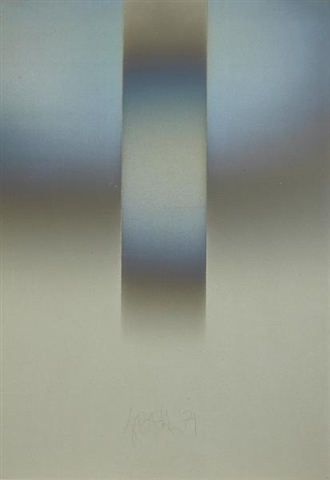Lightning
1976 - Film & Video (Film & Video)
1:23 minutes
Paul Kos
Parked on the shoulder of a single lane highway running through a desert landscape, Marlene looks over her shoulder from inside the car at a fierce storm looming over a distant horizon. Turning her head toward and away from the scene she says, “When I look for the lightning it never strikes, but when I look away it does.” And indeed, the lightning does seem to strike only when she turns away. Before filming Lightning , Paul Kos had done a fair amount of research on lightning, much of it conducted at the lightning research lab at the University of Colorado. He found that in a very good storm it takes about fifteen or twenty seconds for lightning to strike in the same place in the same part of the sky because the atmosphere has to re-ionize. Whether or not one is familiar with the science of storms, Marlene’s repeated deadpan statement seems less like a calculated action and more like a sigh of resignation. Her assured stare dares the viewer to disagree with her perceived reality, despite the fact that lightning can’t be clearly seen until almost halfway through the work. The short length of the film contributes to a feeling of mistrust or disbelief—this blip of a scene could be a glitch, like when one’s brain skips in a moment of déjà vu. Ending abruptly and unresolved, Lighting offers a subtle commentary on truth and fiction, the stories we tell ourselves and others, and perhaps the earth’s indifference to any narrative we might create for it.
Paul Kos works with everyday materials and video to enact a playful conceptual engagement with life and the world. He responds to simple, humble materials and the indigenous elements of specific sites, which he mines for their physical properties and metaphoric possibilities. Throughout these pieces, Kos’s work uses humor to relate the stuff of life back to larger questions of time and spirituality.
Colors:
Related works from the » 1970's created around » San Francisco, California

© » KADIST
Allan Sekula
1973San Pedro is a seaside city, part of the Los Angeles Harbor, sitting on the edge of a channel...

© » KADIST
Daniel Joseph Martinez
1978For I use to eat lemon meringue pie till I overloaded on my pancreas with sugar and passed out; It seemed to be a natural response to a society of abundance (1978), also known as the Bodybuilder series, Martinez asked male bodybuilding competitors to pose in whatever position felt “most natural.” They are obviously trained in presenting their ambitiously carved physiques, but their facial expressions seem comparatively unstudied...

© » KADIST
Larry Bell
1979Like many of Larry Bell’s works, VFGY9 deals primarily with the viewer’s experience of sight...

© » KADIST
Bruce Conner
1978In 1977, as an already-established artist best known for his films, Bruce Conner began to photograph punk rock shows at Mabuhay Gardens, a San Francisco club and music venue...

